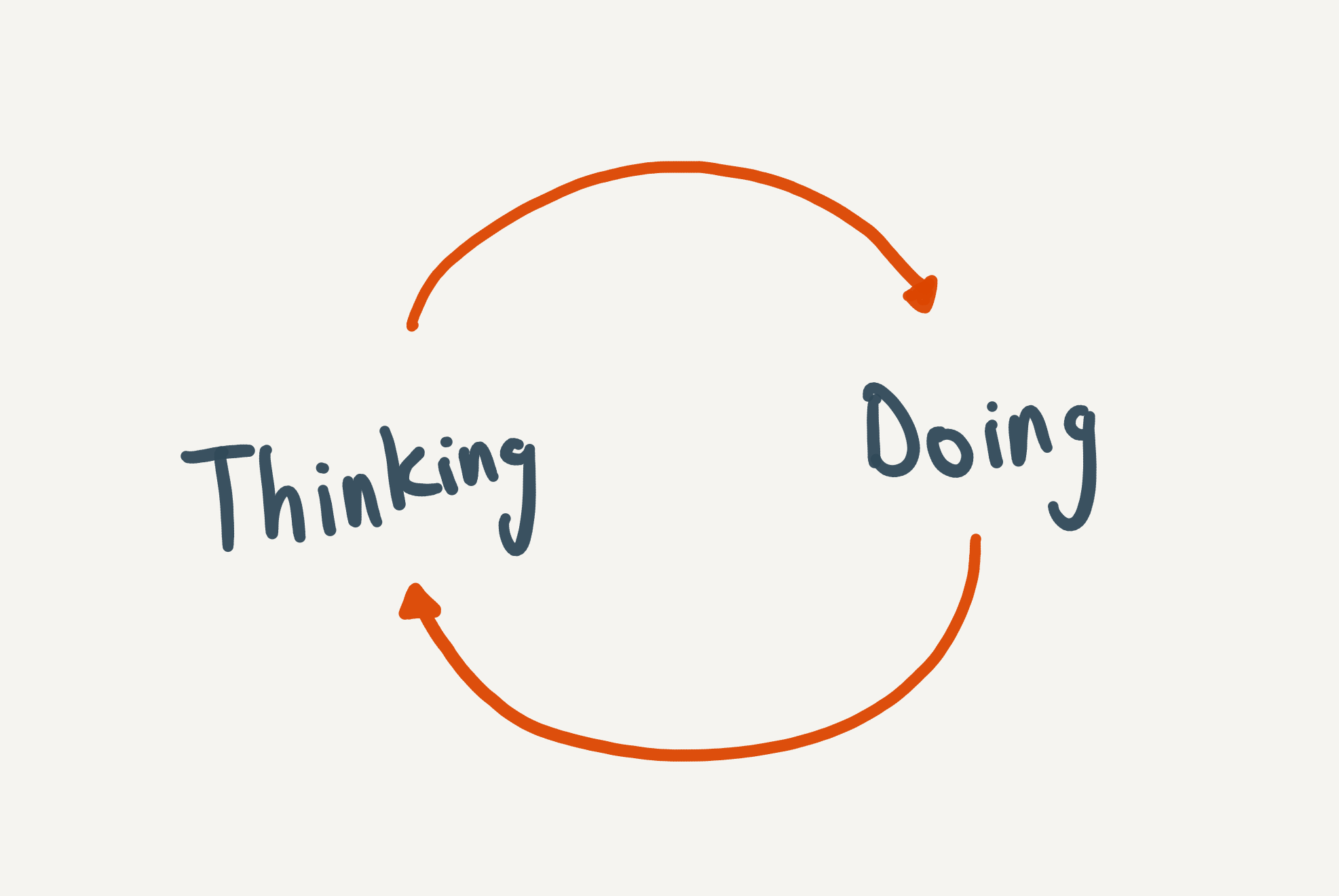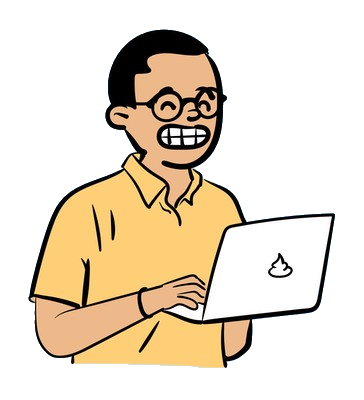I started this post almost 2 years ago, but never finished it. There was always something missing from my perspective on Skin in The Game, and why I don’t necessarily agree that it’s the only way. Since then, I have read a couple books that helped shape my thinking further. Knowing it’s been so long, I should probably re-read Skin in The Game to make sure I understood it correctly.
—
Working in a knowledge industry can lead to some weird dissatisfaction with your capabilities and impact. To simply think about things without ever “getting your hands dirty” For the last few years I’ve been thinking about my own work and place in the industry.
A couple of years ago, I read two books in succession that touched on a similar topic and got me thinking more deeply about the current state of my work and the separation of thinking and doing. I want to explore these topics a bit to help me clarify my own thoughts on the subject.
Doing in the age of knowledge work
Shop Class as Soulcraft by Matthew Crawford is a meditation on doing manual labour in the age of knowledge work. At a high level, it discusses the separation of thinking and doing, the theoretical from the practical, with a couple of different fields as examples.
The author discusses his career change from working in a political thinktank to opening his own motorcycle repair shop. This shift allowed him to see the implications of making decisions without fully enacting their consequences.
“Did looked know you can always untie a shoelace just by pulling on one up you end, even if it’s in a double knot?” I didn’t really know what to do with this information. It seemed to be coming from a different universe than the one I was grappling with.
Thinking about that posited shoelace now, it occurs to me maybe you can and maybe you can’t untie it at a stroke-it depends. If the shoelace is rough and spongy, and the knot is tight, it will be a lot harder to undo than if the knot is loose and the shoelace is made of something slick and incompressible, like silk ribbon. The shoelace might well break before it comes undone. He was speaking of a mathematical string, which is an idealized shoelace, but the idealization seemed to have replaced any actual shoelace in his mind as he got wrapped up in some theoretical problem. As a teenager, this substitution wasn’t yet father’s that my clear to me as such. But it began to dawn on me habits of mind, as a mathematical physicist, were ill suited to the reality I was dealing with in an old Volkswagen.
Shopclass as Soulcraft
A lot of the strategic work I do falls on the thinking side of the spectrum, rarely entering the realm of doing. I spend a lot of time in the realm of theory, research, and planning. Over time I began to see this as a detriment to my abilities; I ended up dissatisfied with a career of pure thinking. I think this is what compelled me to learn to program; the ability to act upon ideas and hypotheses I had. I was now able to test ideas out very quickly. Moving across the spectrum from thinking to doing, I am now able to think through problems better and understand how they manifest in reality. I’ll explore this dynamic further in the Think <> Do Loop section.
The Reality of the Design Process
By solely focusing on theory, you tend to overlook the messiness of reality and end up attempting to solve problems in a vacuum. An extension of this idea is to consider the differences between designing for yourself and designing for clients. Designing for yourself, in a vacuum, tends to be a lot easier and neater. You can balance your own design priorities based on what you intend to communicate. This makes your end product visually interesting and compelling but doesn’t always result in a valuable product for a business or customers.
Unfortunately, this has little bearing on designing products with a client. What makes a design project challenging and interesting is managing the competing constraints and priorities of a client, while also trying to create something you can be proud of. Navigating this fuzzy in-between area allows you to both grow as a designer and develop a variety of essential skills. The only way to test your abilities and build something truly valuable is to walk the line between the different parties involved (design, business, customer) and deliver a balanced product.
Perhaps I like a challenge, but these two design scenarios remind me of how I feel about cycling (going in a whole other direction for a moment). If all you do is ride on flat terrain, it’s a dull experience, and you don’t really grow as a rider. It is the hills within a route that makes it interesting, even if that means the ride is harder.
Adding accountability to the equation
Skin in the Game, a concept from the eponymous book by Nassim Taleb, argues that without the potential for actual consequences (SITG), your decisions or ideas shouldn’t be adequately considered. You are simply armchair theorizing without repercussions.
A prediction is wrong only if it costs you something.
— Nassim Nicholas Taleb (@nntaleb) March 18, 2018
A prediction is right only if it makes you something.
The rest is tawk.#skininthegame.
Without the upside and the downside, your decisions and actions can’t be optimal. Or so Taleb says. I don’t think the tweet makes this clear, but you need both upside and downside to have Skin in the Game. To be trusted, you need to accept the risks associated with making a recommendation and be held accountable. My favourite articulation of this idea is the phrase, “Don’t tell me where to invest. Show me what’s in your portfolio” when discussing financial advice. Often times advisors try hard to sell you on products that they would not purchase, so cut the crap and show us what you do yourself.
In Misunderstanding Skin In The Game, Alex Danco talks about how SITG is not incentive alignment, but a filter for survival. While I don’t wholly get the point, I sum it up more closely as accountability. How are you held accountable for your information or actions?
Giving Objective Advice in High-Affect Scenarios
Since reading these first two books, I have had time to think further on this and read a couple of books providing a new perspective: AlphaBrain and Gut Feelings. Both are about decision-making but from different lenses.
Something that I have struggled with immensely in my own life and work is following my own advice. It is easier to provide objective critique and feedback on projects I am not personally building. Those that I am leading I struggle to view objectively. I am unable to take a step back and see things as an outsider; it’s something I know I need to work on. I have since learned this is because of high affect decisions, or those influenced by current emotions.
I don’t think I am alone in this; I have seen firsthand instances of founders who are unable to think critically about what they are trying to achieve. This assessment is not meant to dissuade them. Instead, I believe by not having Skin in the Game, you can act as an objective third-party. This is where I see value in coaches and advisors, providing feedback and guidance. It’s still up to the founder to take whatever advice they wish, but advisors can assess the situation clearly when giving direction.
Why is this the case? I think it comes down to emotional involvement or high affect decisions as Stephen T. calls them in AlphaBrain. When portfolio managers make decisions regarding their own money, they are overly emotional and subject to bias and decision-making errors. Isn’t this what we are arguing for? Skin in the Game? I think from an accountability point of view, this is important. The challenge comes when our decisions are subject to cognitive errors and our accountability clouds our judgement. It may put us into an unfavourable position, such as those of doctors in the US.
In Gut Feelings, Gerzinger describes the predicament they are faced with when prescribing tests. If the patient is not related to them, they generally optimize for the downside-risk (not getting sued) by over-indexing on testing and preventative measures. This is often expensive and intrusive, but because a doctor is accountable, they need to be protected. On the flip side, doctors state they will recommend less-intrusive procedures that limit the potential for false-positives when dealing with immediate family. They know they won’t be sued, but are still held very much accountable to their decisions. Where does SITG fall in this scenario?
The Think <-> Do Loop
So, what is better? How do we put it all together? Having seen examples of projects lacking either thinking or doing, it’s impossible to say one is superior.
I think it’s valuable to have experience at both ends of the spectrum and crucial that in the work you do, you have a hand in the entire process. When I use ‘you’ in this case, that can include the collective ‘you’ of a company or organization selling services to clients, as some projects are too large to be handled alone.
You need to be able to think critically to do good work, but without the experience of implementing your ideas, you lack a true source of feedback to continue to do better thinking. These are really just two sides of a coin: such as reading and writing, teaching and being taught, or speaking and listening.

I find both are important in my work. I oscillate between the two, often getting antsy if I spend too much time solely thinking and not implementing ideas. In some contexts, I jump into doing without fully thinking things through, as I like the feeling of progress (real or not), which may move me down the wrong direction. The act of thinking through doing – by actually solving the problems yourself, you will be forced to think through situations in a real way, beyond just hypothesizing.
It feels like throughout this essay, I argue for both sides of Skin in the Game. I believe the benefits that come from accountability are worth having, and this should be your default mode. Where possible, augment your judgement with an impartial advisor or friend, someone without Skin in the Game.
